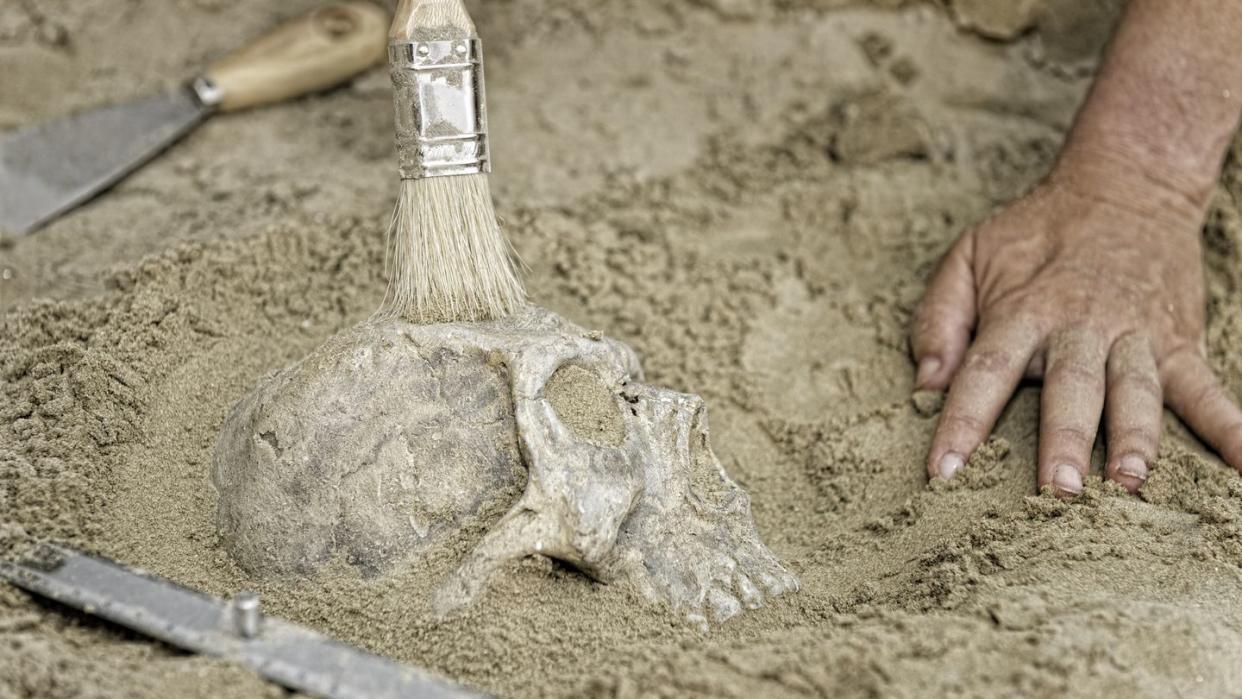Archaeologists Cleared the Way for a Nursing Home—and Found a Mass Grave of Plague Victims

"Hearst Magazines and Yahoo may earn commission or revenue on some items through these links."
While trying to build a retirement home in Nuremberg, Germany, archeologists discovered what could be the largest mass grave in Europe.
The pit could contain anywhere from 1,500 to 2,000 bodies, and experts suggest that it was likely hastily dug for plague victims who died around 1632-1633.
While the discovery is a important piece of history for the region, it also provides an unprecedented glimpse into the periods of plagues that ravaged Europe for centuries.
If you’re ever asked the classic question, “If you could time travel, where and when would you go?” it’s probably best to skip 1630s Nuremberg, Germany on your list of destinations. Archeologists exploring a dig site in the area before the construction of a retirement home found what is possibly the world’s largest plague pit, containing at least 1,000 skeletons—and likely many hundreds more left to be discovered—which is believed to date to around 1632-1633.
Although precise dating hasn’t been performed yet, a note was found at the site from 1634 detailing that a plague had killed some 15,000 inhabitants of Nuremberg during that year. The discovery comes as a bit of a surprise, as Nuremberg (like many medieval cities) had a dedicated plague cemetery. However, this collection of bones was found outside of the cemetery, suggesting that the burials needed to be conducted in a short enough timeframe to warrant eschewing the typical Christian burial practices used in the region at the time, according to Nuremberg Department of Heritage Conservation archaeologist Melanie Langbein in an interview with CNN.
Buy the 1630s, Europe was no stranger to plagues, and evidence suggests that the bacterium Yersinia pestis has been around on the continent since at least 3,000 BCE. In the early 1630s, Nuremberg was likely afflicted with bubonic plague, which is only one of several forms of plague. And as the Lord Mayor Marcus König stated at the excavation site, the devastating illness showed no favor and gave no quarter.
“The graves contain the mortal remains of children and old people, men and women; the plague did not stop at gender, age or social status,” König said. “Now, for the first time, an empirically reliable analysis of a large population group from this period can be carried out for a city with the importance of Nuremberg.”
While some of the skeletons appear to be tinted strangely green, this is not some ossified side effect of plague. This unexpected hue is likely due to waste from a nearby copper mill, the German website Der Spiegel reports. The bones of plague victims show no visible differences from non-infected remains, and additional examination will be required to confirm the existence of the Yersinia pestis bacteria.
So, how big could this pit be? Julian Decker, whose company is excavating the site, tells CNN that it could contain upwards of 2,000 remains, which would make it the largest mass grave in Europe.
The ravages of plague—bubonic or otherwise—may feel like a chapter of history that’s forever closed, but the plague is still with us. Thankfully, this once ravenous disease is now kept in check with antibiotics and proper treatment. But history won’t soon forget how the small bacteria Yersinia pestis left death in its wake as it carved its path through human history.
You Might Also Like

